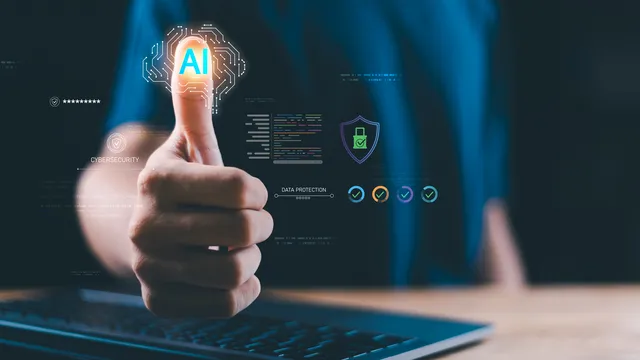All you Need to Know about Blockchain Technology

In this era, we all are well aware of the popular digital currency known as Bitcoin. How do you think this digital currency came into existence? The technology and the digital ledger system working behind it is Blockchain technology. What is Blockchain technology? It is about decentralized peer-to-peer transactions. This refers to the direct transaction between two people without the involvement of a third party or intermediaries. This is known as a decentralized system which prevents the leakage and alteration of data. The purpose behind the development of Blockchain Technology is to ensure the credibility, authenticity, transparency, and prevention of alteration of data. Let’s dive deep into the Blockchain technology and gain valuable insight about its mechanism.
Mechanism behind the Blockchain Technology and Its Importance in Today’s Businesses
As the name suggests, the system consists of blocks which has information stored related to the sender and receiver of the transaction, the amount transferred, and also contains the unique identifier known as Hash. Additionally, the block also contains the hash of the previous block. This makes sure that all the blocks are interconnected and when there is a change in any block it can be detected instantly. This ensures the credibility and protection of the data as it becomes nearly impossible for the hacker to change the data of all the blocks.
Whenever any transaction is made, a new block is added to the Blockchain system. However, the system doesn’t approve of any block without making sure that it is authentic. This is the point where the Consensus process comes into play.
Whenever a transaction is requested, participants eligible for checking the validity of the blocks, participate in solving the puzzle. If all participants give a valid solution, the new block is added to the chain. Participants who check the validity receive the award which is the certain amount detected from the transaction.
This is known as Data Mining. Blockchain technology doesn’t exist on its own. First of all, a smart contract that is developed and after regular testing, it is deployed on any of the Blockchain platforms such as Hyperledger Fabric, IBM Blockchain, Ethereum, Binance Smart Chain, and many more.
Also Read: What are the benefits of Blockchain Technology in E-commerce?
This is an overall framework of Blockchain Technology. Let’s discuss its key components.
The Fundamentals of Blockchain Technology
Distributed Ledger:
It refers to the database that contains all the transactions. It keeps on updating whenever a new block is added to the Blockchain. Every participant contains a copy of the database even when it’s updated. The blocks are only added to the database when all the participants reach a consensus. There is no need for central authority to process and validate transactions.
Peer-To-Peer Network:
It refers to the network in which the computers of peers (nodes) are interconnected. They can directly make transactions without the involvement of central authority. This helps in the availability of validated data for both nodes.
Consensus Mechanism:
Nodes participating in peer-to-peer networks make sure that before adding the transactions to the Blockchain, they are validated. In the consensus mechanism, nodes reach a consensus on whether the transaction is legitimate enough to be added to the system or not. There are three types of consensus mechanisms:
Proof of work: The node (miner) that first solves the complex problem will have the authority to reach a consensus and add the block into the system.
Proof of stake: In the consensus process, only those nodes (miners) can take part that holds the higher share of the digital currency. This increases the efficiency of the consensus process by reducing the time and cost of communication.
Proof of authority: In this consensus process, only the trusted validators are selected via a voting process who has the authority to verify and add new blocks.
Smart Contract:
It includes all the functionality of Blockchain technology such as how data will be stored, environment execution, and predefined conditions or rules depending upon the requirements of the client. It is a self-executing program written in solidity language by web developers.
Transparency Of Data:
All participants or nodes have access to data as everyone has a copy of the transactions stored in the ledger.
Importance Of Blockchain Technology In Businesses
Trust:
No possibility of alteration of data, transparency of data, validation of transactions, and cost-effectiveness have persuaded people to engage in business activities that involve transactions. The latest example of it is Cryptocurrency where two participants who do not know each other are engaged in transactions.
Faster Transactions:
The removal of intermediaries from the transaction process between two people has saved a lot of time that is usually taken by the manual means of transactions.
Cost Reduction:
This technology has reduced the cost of data collection, auditing, and editing the data. There is also no need to make transactions by heavily paying the middleman.
Immutability:
Once the transactions are made, no one can alter them. It is because every block contains the hash of the previous block and any change in it will lead to the change in consecutive blocks. The problem can be detected immediately and can be worked upon. The security of the blocks is provided by the Cryptographic algorithms. If an unauthorized participant tries to add the block then it will have to go through the validation process where the transaction request will be rejected.
Industries Using Blockchain Technology:
Healthcare organizations: Medical records of patients
Financial Institutions: For quick and secure transactions
Real state: For Property transactions and the records related to property owned.
Blockchain Application:
Crypto currencies are the most well-known applications of Blockchain Technology. Cryptocurrency refers to the digital currency and among them are:
Conclusion:
Blockchain is an emerging technology that is widely used all over the globe in multiple industries. Its demand is increasing at a very high rate because of the transparency, privacy, security, validity, and immutability of data. Blockchain technology has replaced many manual processes such as auditing and manual transactions which take a lot of time. The speed of the transactions is increased by the removal of intermediaries through peer-to-peer networks which allows the direct transaction between participants. The key components that and what is Blockchain technology consists of are Distributed ledger, Smart Contract, Consensus Mechanism, Transparency of data, and Peer-to-Peer network.






